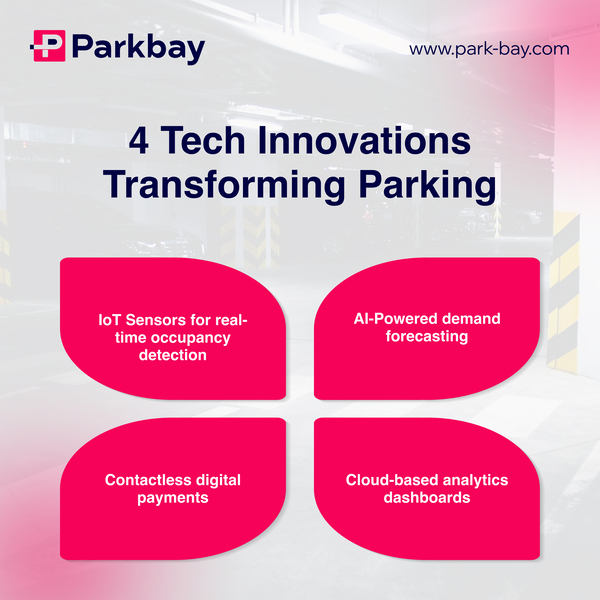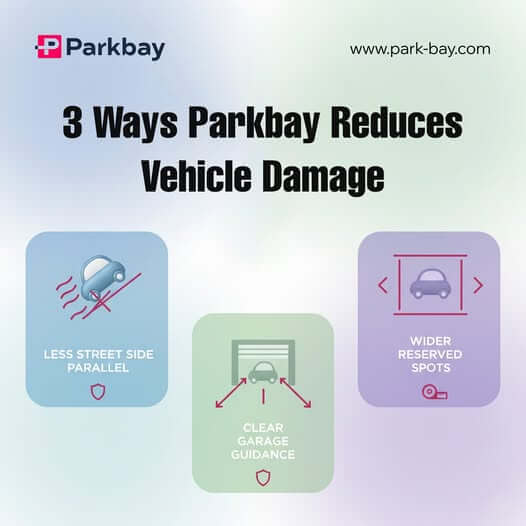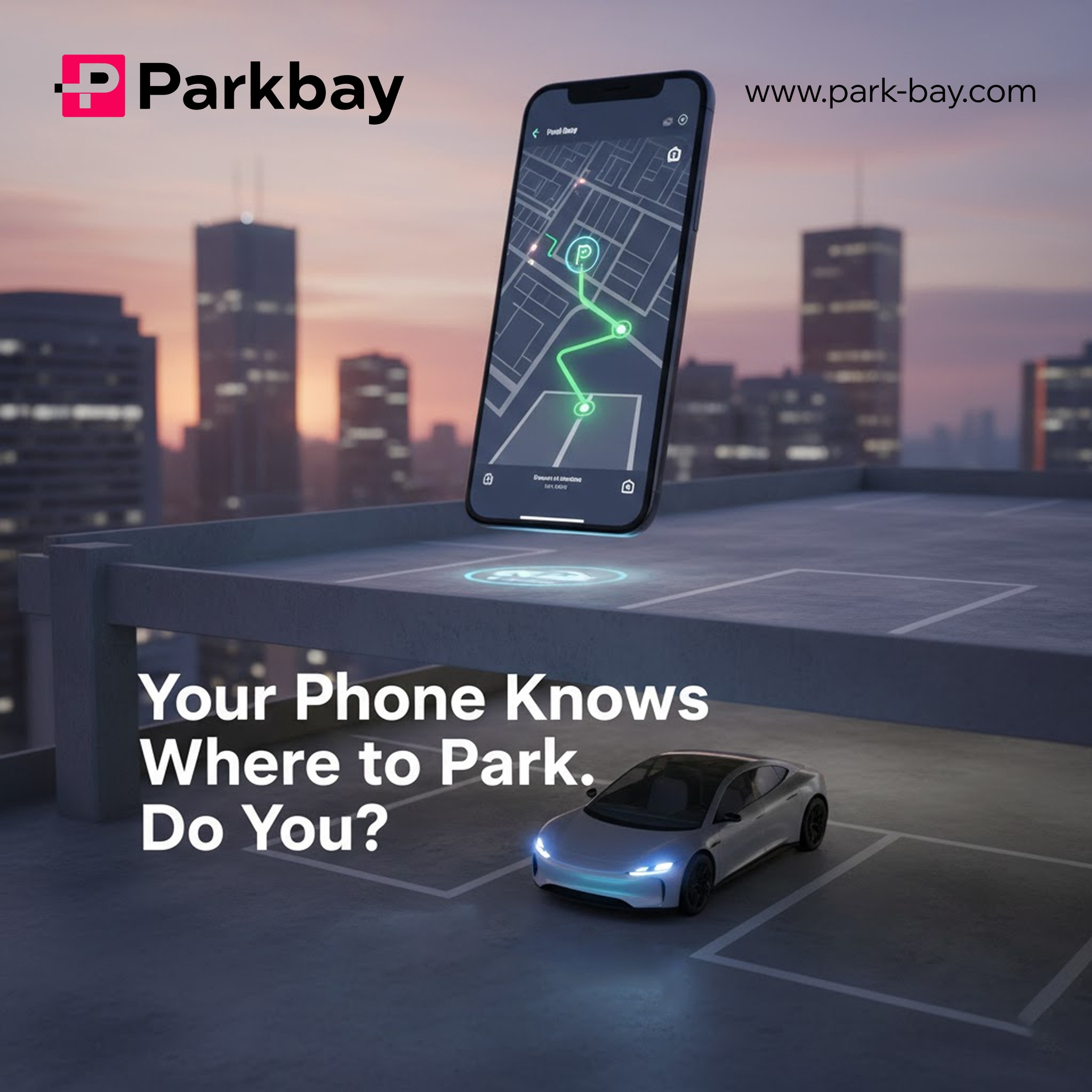The way we park has long been taken for granted—an act as routine as it is frustrating. For decades, parking meant searching for a space, hoping to find one nearby, feeding a meter or paying an attendant, and then hoping you made it back before your time expired. In dense urban centers, commercial zones, and even small towns, traditional parking systems have lagged behind the pace of innovation seen across other areas of urban infrastructure.
But that’s changing rapidly.
Smart parking is no longer a concept of the future. Today, it’s a growing movement powered by technological innovations that are revolutionizing the way cities, businesses, and individuals manage space, time, and mobility. These innovations are solving long-standing challenges such as congestion, inefficiency, and revenue loss—while enabling more sustainable, data-driven urban ecosystems.
In this blog, we explore four key tech innovations that are fundamentally transforming parking from a manual chore into an intelligent, integrated part of the modern cityscape.
1. IoT-Based Real-Time Parking Sensors
One of the most critical pain points in parking is uncertainty—drivers not knowing where a space is available. This leads to circling, congestion, and wasted time. The Internet of Things (IoT) is changing that.
How It Works:
IoT-enabled sensors are embedded in individual parking spots or on overhead poles to detect whether a space is occupied or vacant. These sensors transmit real-time data to a centralized platform that can display availability to users through mobile apps, websites, or digital signage.
Impact:
-
Reduces the time spent looking for parking
-
Decreases city traffic and emissions caused by idle vehicles
-
Allows operators to monitor usage patterns and space occupancy
-
Enables dynamic direction of vehicles to available spots in high-demand areas
Cities like Amsterdam, Los Angeles, and Singapore have already implemented IoT-based parking solutions, resulting in measurable reductions in traffic congestion and driver frustration.
2. AI-Driven Predictive Analytics
If IoT sensors tell us what’s happening now, Artificial Intelligence (AI) helps us anticipate what will happen next. AI brings the power of data science to the realm of parking, enabling systems to not only respond to current conditions but to forecast future patterns.
How It Works:
By analyzing historical data, user behavior, time-of-day trends, weather patterns, and event schedules, AI systems can predict peak times, preferred spots, and likely durations of use. This data informs pricing models, staffing needs, and urban planning.
Impact:
-
Enables dynamic pricing, adjusting parking rates in real time to balance supply and demand
-
Supports data-driven policy decisions, such as adjusting parking time limits or enforcement windows
-
Improves resource allocation, such as deploying enforcement officers or maintenance crews more effectively
-
Enhances user experience by sending proactive notifications or offering personalized spot suggestions
For example, airports and sports venues increasingly use AI to prepare for parking surges, ensuring smoother arrivals and reducing operational bottlenecks.
3. Contactless & Digital Payment Systems
One of the most visible and user-friendly transformations in parking comes in the form of contactless digital payments. No more searching for loose change or dealing with outdated ticketing machines.
How It Works:
Users can pay for parking through mobile apps, QR codes, or tap-and-go systems using credit cards, digital wallets, or even automated license plate recognition systems. Many platforms also allow extensions, refunds, or validation without physical interaction.
Impact:
-
Improves convenience and safety for users
-
Increases compliance by simplifying the payment process
-
Reduces operational costs by eliminating the need for manual ticketing or cash handling
-
Enhances revenue tracking and fraud prevention for operators
Retail centers, hospitals, and urban municipalities are adopting these systems at a fast pace, especially in the wake of the global push for contactless transactions and digital convenience.
4. Cloud-Based Centralized Management Platforms
Modern parking systems are no longer standalone hardware units operating in silos. The introduction of cloud-based centralized platforms enables integration of all parking components into one scalable, data-rich environment.
How It Works:
These platforms connect real-time sensor data, payment systems, access control mechanisms, and user interfaces into a unified dashboard. Operators can monitor activity, generate reports, implement rule changes, and analyze trends—all remotely and in real time.
Impact:
-
Offers scalability, making it easier to manage multiple lots, garages, or city zones
-
Reduces infrastructure overhead, since much of the computation and storage is handled in the cloud
-
Provides real-time dashboards for quicker decision-making and response
-
Supports integration with third-party services such as ride-sharing apps, public transit, or navigation systems
For city planners, this means greater visibility into mobility patterns. For private operators, it means streamlined operations and new ways to monetize underutilized assets.
Why These Innovations Matter
Parking may seem like a small component of the urban experience, but it touches everything—from transportation and the environment to retail, hospitality, and real estate. Each of these innovations helps address one or more of the following:
-
Urban congestion: By guiding vehicles more efficiently and reducing idle time.
-
Environmental sustainability: By minimizing emissions from vehicle idling and supporting EV charging infrastructure.
-
Economic impact: By helping businesses attract more customers and cities optimize revenue from parking assets.
-
User satisfaction: By offering more seamless, predictable, and convenient experiences.
When deployed together, these technologies form a comprehensive smart parking ecosystem that meets the needs of modern cities and their citizens.
The Road Ahead
Smart parking is no longer just a pilot project for forward-thinking cities. It is becoming a necessary investment in the face of rising urban populations, environmental imperatives, and the growing complexity of transportation networks. The rise of electric vehicles, autonomous cars, and shared mobility further increases the need for smarter parking infrastructure.
However, the true power of these innovations lies in interoperability and adoption. Cities, real estate developers, business owners, and technology providers must collaborate to ensure that smart parking solutions are implemented at scale, maintained efficiently, and integrated with broader urban mobility goals.
Final Thoughts
The transformation of parking is not just about making parking easier. It’s about reimagining how we design, manage, and move through urban environments. These four innovations—IoT sensors, AI analytics, contactless payments, and cloud platforms—represent a shift toward more intelligent, responsive, and user-centric systems.
By embracing these technologies, we’re not just solving parking problems. We’re unlocking new possibilities for economic growth, sustainability, and better quality of life.
In the evolution of cities, smart parking is a foundational step. And the future is parking smarter—today.








Leave a reply